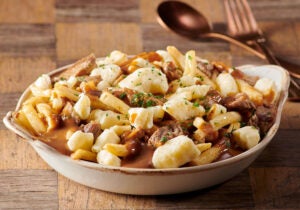This article originally appeared in the Gordon Food Service Foodscape publication.
In a business fixated on growth, “shrink” can’t be good. Think again. A smaller menu can provide more flexibility and protect profits during times of rising or unstable pricing.
The summer season is a great time for menu management. People are busy, and a menu with fewer, simpler options allows them to choose quickly. It also eases the load on your kitchen, which may be affected by labor shortages.
It’s time to think like a food truck—present a craveable menu built around fewer items that can be cross-utilized on the menu. The longer the menu, the more costly it is to maintain. More dishes mean more products, larger storage capacity, extra kitchen skills and a bigger staff. Reducing any of those can offset food costs.
Don’t forget about your brand
Menu changes shouldn’t come at the expense of your brand. It requires an understanding of your customers. Do guests want more fresh choices, local flavors, global options? Define your menu based on expectations of your position in the marketplace.
The pandemic had a huge impact on the availability and price of certain products. Seasonality also affects pricing and your profitability on menu items. Act deliberately. What looks like a bargain during the middle of the July growing season may be a burden in winter. Here are some decision-making tips:
- Create dishes with flexibility in mind—sides of fresh greens in summer, root vegetables in winter.
- Use limited-time offers to promote items when they are available and profitable.
- Consider frozen products for price-sensitive items to stabilize costs.
- Incorporate pre-cooked, pre-sliced or other value-added products to save time.
Build menu flexibility smartly
Everything starts with your core menu—the basic items that determine your brand. Your menu can always change, but every change requires serious consideration. Simply reacting to hot trends may feel like a flexible menu, but it only works if the changes enhance your brand.
For example, if you menu a regular chicken sandwich and want to add a Nashville hot chicken sandwich option, there’s a lot to consider. Ask yourself:
- Does it fit my brand?
- Will it satisfy customer demand?
- Will it take more labor?
- Can I also use the hot chicken in a salad or other entree?
By making the right choice of products it’s possible to find menu solutions that fit your needs without hurting your bottom line.
Re-evaluate your recipes
A smaller, flexible menu works best when recipes are carefully managed. Jean-François Houde, Executive-Chef of Restos Plaisirs in Quebec, says menu optimization starts with the recipe book.
“Standardization of each plate is the key to maximize consistency and quickness,” he notes. “Vendors are a great solution when it comes to efficiency. While they are already equipped to produce large quantities of a specific item, they also keep high quality standards as well as our signature flavors.”
He also favors economizing with cross-utilization. “Limiting the number of items you use in your kitchen is definitely the first strategy to optimize your components because It helps manage freshness. Each product should be used in a couple of dishes, having single-use items can be risky.”
Menu agility is easier than ever today. Online menus allow real-time changes to manage pricing, product availability or production challenges. Ask your Gordon Food Service Sales Representative for ideas to right-size your menu.




























